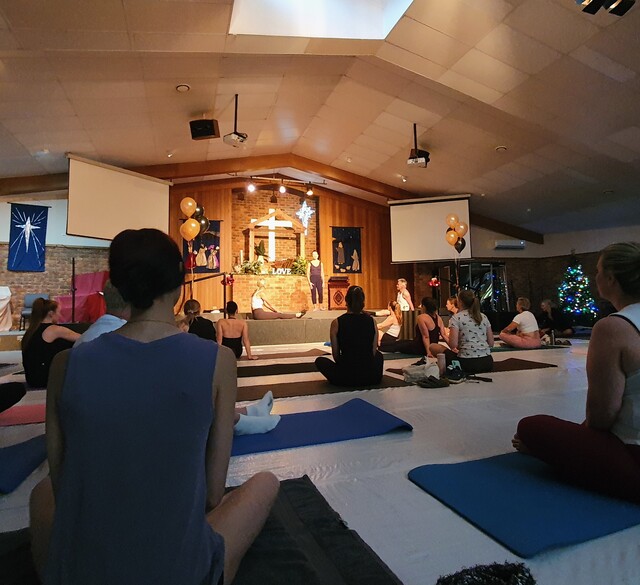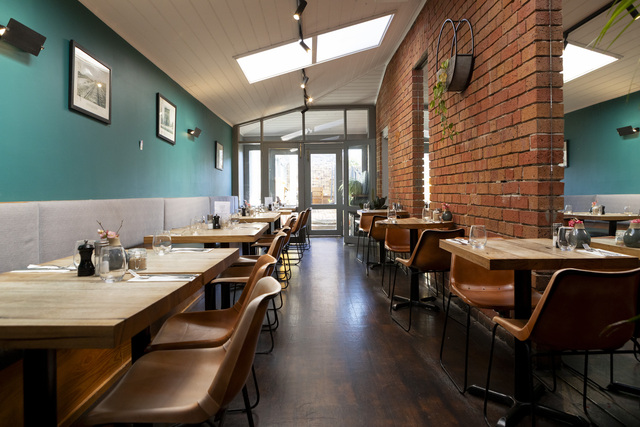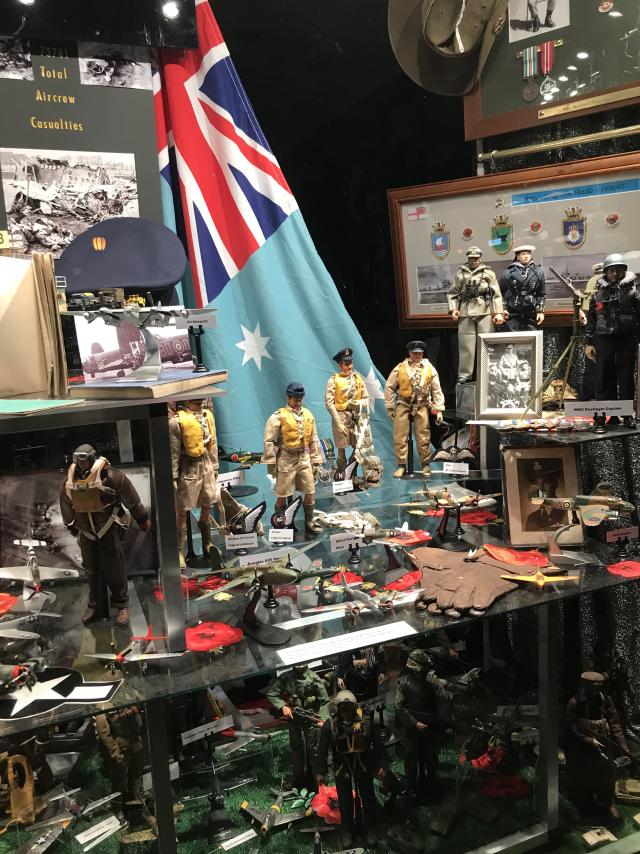 Gladysdale CFA members back row, from left: Vesna Bulut, Tim Sherwood*, Peter Anliker*, Greg Morrison,* Tom Watkins*, Chris Young*, Niall McLaughlin , Alan Hall,* Brian Eagle* and Dennis Cope*. Middle row: Sandra Marsh*, Ina Halls*, Yvonne Cope*, Adrian Hanson*, Clive Halls* and Peter Jennings*. Front row: Les Hart,* Bob Sanders*, Stuart Hall*, Sharron Hadj* and Rob Hadj*. Absent: Nick Harrison*, Dirk Maddicks*, Martin Dartnall*, Pam Dartnall*, Simon Hrabe*, Mark Barille*, Kevin Sanders* and Simon Van Der Linden*. * Members as at February 2009.
Gladysdale CFA members back row, from left: Vesna Bulut, Tim Sherwood*, Peter Anliker*, Greg Morrison,* Tom Watkins*, Chris Young*, Niall McLaughlin , Alan Hall,* Brian Eagle* and Dennis Cope*. Middle row: Sandra Marsh*, Ina Halls*, Yvonne Cope*, Adrian Hanson*, Clive Halls* and Peter Jennings*. Front row: Les Hart,* Bob Sanders*, Stuart Hall*, Sharron Hadj* and Rob Hadj*. Absent: Nick Harrison*, Dirk Maddicks*, Martin Dartnall*, Pam Dartnall*, Simon Hrabe*, Mark Barille*, Kevin Sanders* and Simon Van Der Linden*. * Members as at February 2009.
By Kath Gannaway
ONE of the enduring memories of Black Saturday for Dennis and Yvonne Cope and fellow fire-fighter Chris Young will be of a young woman resolutely putting out spot fires with a watering can.
The three Gladysdale Fire Brigade volunteers were on a strike team in Long Gully Road at Healesville in a scenario Yvonne described as “like walking into a volcano”.
“When you first drove in it was quite eerie with the fire burning on the roadsides, but the greater impression was the hills burning all around,” she said.
They came across the woman, they think about 20 years old, as they crossed over the viaduct.
“She was there by herself; parts of the house were on fire, there were little fires everywhere, the timber retaining walls were burning,” said Chris.
They were impressed by her composure and accepted her assessment that she was “all right”, moving on to help others who were not managing so well.
“You could see she was worried, but she was also focused on what she was doing and calm as she went about saving the house,” Yvonne said.
Gladysdale Fire Brigade’s main station is in Gladysdale, but just this year it established a second base at Powelltown and adopted the original brigade name “Little Yarra”.
It is fortunate to have a strong nucleus of experienced fire fighters. On the day, their captain, Les Hart, was fighting the Bunyip fire as part of a DSE summer crew.
He had been working there with other DSE fire-fighters since the Monday night before 7 February, and in the Upper Yarra and O’Shannassy catchments working on lightning strikes for a week before that.
Simon Hrabe, also a career fire-fighter was on duty at the CFA regional headquarters and other members were part of the team at the Incident Control Centre at Woori Yallock on the day, and as the fires continued.
As first lieutenant, Dennis Cope took charge on Black Saturday.
Like many of the brigades along the Warburton Highway, Gladysdale was keeping one eye on the Bunyip fire, not deemed an immediate threat, while responding as part of the wider regional response to the fires across the other side of the valley – Yarra Glen, Steels Creek, Dixons Creek and Chum Creek.
At around 4pm the call came through for Gladysdale to join the strike team at Woori Yallock and, with some pagers not working, Dennis sounded the siren.
“As soon as I heard the siren I knew something was happening, but I was certainly not aware that what seemed like the whole world was burning,” Chris said.
Dennis said they’d barely left the station when they were paged to a fire caused by lightning on the mountain above Gladysdale.
With another truck responding to that fire, the Gladysdale crew, including Martin and Pam Dartnall, continued on.
“The radio traffic was just chaotic with calls for help and until all the trucks turn up to the strike team, it can’t get going,” Dennis explained.
Even so, there was a frustrating wait at both Woori Yallock and Healesville.
“It was a case of hurry-up and wait at Woori, then hurry-up and wait again when we got to Healesville,” Chris said.
Chris said ‘000’ were still getting calls for help when they arrived and there was no doubt that the people there were pleased to see them. “It was like being in the eye of a tornado for those people,” he said.
Later they were sent to Chum Creek, on the other side of the ridge, and found a completely different situation. “The feeling at Chum Creek was really quite surreal,” Chris said. “There was nobody around. There were fires burning, but very few people … most must have evacuated out of the area.”
One group who didn’t evacuate presented a bizarre picture to the firefighters. It was a typically ‘Aussie’ response, but under the circumstances, unexpected.
“We came across these people, about three or four in the morning just sitting there having a barbecue surrounded by burnt-out bush,” Yvonne said.
“The reaction of some people to the situation was astounding.”
Retracing their steps some 10 months later, the exact details of time and place have to be worked back.
“You are tired, it’s dark and to some extent you are in unfamiliar territory,” Dennis said.
“We did three shifts, 27 hours, 24 on the second and about 17 or 18 on the third shift.
“Some of us went up to Steels Creek on the Sunday and others ended up back at Healesville over the next week or two and it can become a bit of a blur, all you know is you have put in a fair effort,” he said.
With so much written and said about the greatest disaster in Australia’s history, Dennis says he feels his brigade members can feel satisfied with their contribution.
“As far as the people in our brigade who went away, I was thoroughly satisfied with everything everybody did,” he said. When you put in 60 or 70 hours of your time to go out and help protect people and assets from fire, I think you do have a sense of satisfaction,” he said.
But, he stresses, it is a whole brigade job, and a whole brigade response.
“It’s not only the ones who went out on a truck, there were a lot of people here who were holding the fort and doing their bit in other areas,” he said.
Captain Les Hart is also proud of the team effort put in by the Gladysdale volunteers, on the fire front, and on the home front.
“Tanker nine was covering the area and responded to quite a number of calls on that night, including lightning strikes and a call to the nursing home in Yarra Junction.
“There were others like young Tom (Watkins), his first major fire, and he spent virtually the whole day on a chainsaw clearing trees, and continued to do that over the next few days,” he said.
Black Saturday, and the weeks after, he has no doubt will be remembered by his members as “awesome” in the true sense.






